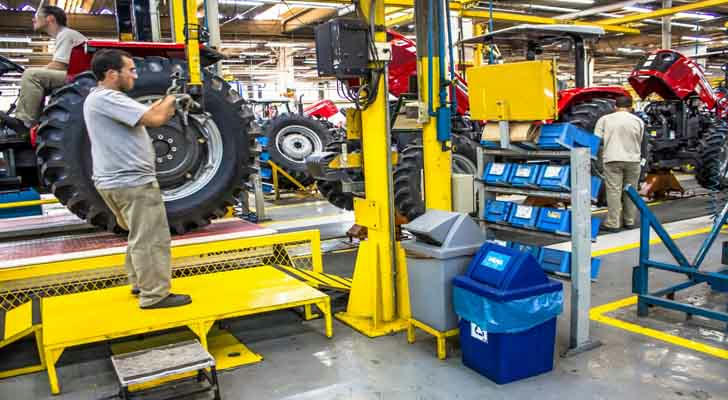The Marvelous World of Mechanical Engineering: Where Creativity Meets Gears
Have you ever marveled at how a tiny watch keeps perfect time, or how a massive bridge can withstand the weight of thousands of cars? Behind these everyday wonders lies the fascinating world of mechanical engineering—a field where creativity, physics, and a love for tinkering come together to shape the world around us. Whether you’re a curious beginner or a seasoned DIY enthusiast, let’s take a deep dive into the mechanics of how things work, with a sprinkle of fun along the way!

What is Mechanical Engineering?
Mechanical engineering is the art and science of designing, analyzing, and building mechanical systems. It’s one of the oldest and broadest engineering disciplines, covering everything from tiny micro-sensors to massive spacecraft. At its core, mechanical engineering is about solving problems and making things work better, faster, and smarter.
Here are some cool areas where mechanical engineering shines:
- Robotics: Designing robots that can perform tasks too dangerous or tedious for humans.
- Aerospace: Building airplanes, rockets, and satellites that defy gravity.
- Automotive: Creating cars that are faster, safer, and more efficient.
- Energy: Developing renewable energy systems like wind turbines and solar panels.
- Biomechanics: Designing prosthetics and medical devices that improve lives.

The Magic of Mechanics: How Things Work
Let’s break down some everyday mechanical marvels and the science behind them:
1. The Bicycle: A Perfect Balance
A bicycle is a masterpiece of mechanical engineering. It uses gears, levers, and wheels to convert human energy into motion. The chain and sprocket system multiplies your pedaling force, while the brakes use friction to slow you down. And let’s not forget the frame—its triangular design makes it strong yet lightweight. Next time you ride a bike, remember: you’re piloting a marvel of engineering!
2. The Clock: Precision in Motion
Clocks are a testament to the precision of mechanical engineering. Inside a mechanical clock, a series of gears, springs, and levers work together to keep time. The escapement mechanism, for example, regulates the release of energy, ensuring the clock ticks at a consistent rate. It’s a beautiful dance of physics and craftsmanship.
3. The Jet Engine: Powering the Skies
Jet engines are a triumph of mechanical engineering. They compress air, mix it with fuel, and ignite it to produce thrust. The turbine blades inside a jet engine spin at incredible speeds, withstanding extreme temperatures and forces. It’s no wonder jet engines are often called the “heart” of an airplane.
A Day in the Life of a Mechanical Engineer
Meet Alex, a mechanical engineer who specializes in robotics. Here’s a glimpse into his day:
- Morning: Alex starts his day by reviewing designs for a new robotic arm. He uses computer-aided design (CAD) software to tweak the dimensions and ensure the arm can lift heavy objects without breaking.
- Afternoon: He heads to the workshop to test a prototype. The robotic arm isn’t moving as smoothly as expected, so Alex adjusts the gear ratios and lubricates the joints. After a few tweaks, the arm works perfectly.
- Evening: Alex attends a webinar on artificial intelligence in robotics. He’s always learning new skills to stay ahead in his field.
Alex’s story shows how mechanical engineering is a blend of creativity, problem-solving, and lifelong learning.

Fun Mechanical Myths Busted
Let’s clear up some common misconceptions about mechanics:
- Myth: Bigger engines always mean more power.
Truth: Power depends on efficiency, not just size. A well-designed small engine can outperform a poorly designed large one. - Myth: Robots will take over all human jobs.
Truth: Robots are tools designed to assist humans, not replace them. They excel at repetitive tasks but lack the creativity and adaptability of humans. - Myth: Mechanical engineering is all about machines.
Truth: Mechanical engineering also involves materials science, thermodynamics, and even biology. It’s a truly interdisciplinary field.
Why Mechanical Engineering is Cool
Mechanical engineering is like a playground for problem-solvers. Here are some reasons why it’s so fascinating:
- Endless Possibilities: From designing roller coasters to building life-saving medical devices, the applications of mechanical engineering are limitless.
- Hands-On Learning: Mechanical engineers get to build and test their designs, turning ideas into reality.
- Impact on Society: Mechanical engineering improves lives by creating technologies that make the world safer, healthier, and more efficient.

A Case Study: The Mars Rover
One of the most inspiring examples of mechanical engineering is the Mars Rover. These robotic explorers are designed to withstand the harsh conditions of Mars, including extreme temperatures, dust storms, and rough terrain.
The Perseverance Rover, launched in 2020, is a marvel of engineering. It’s equipped with a robotic arm, a drill for collecting rock samples, and even a small helicopter named Ingenuity. The rover’s wheels are specially designed to grip the Martian surface, while its power system uses a radioisotope thermoelectric generator to produce electricity from heat.
The Mars Rover project showcases the ingenuity and teamwork of mechanical engineers. It’s a reminder that the sky is not the limit—engineers are reaching for the stars!
Fun Experiments to Try at Home
Want to explore mechanical engineering at home? Here are some fun experiments:
- Build a Rubber Band Car: Use a cardboard base, rubber bands, and bottle caps to create a simple car. Experiment with different designs to see how far it can go.
- Make a Paper Bridge: Fold sheets of paper into different shapes (like triangles or arches) and see which design can hold the most weight.
- Create a Balloon-Powered Boat: Attach a balloon to a small plastic container and watch it zoom across water as the air escapes.
These experiments are a great way to learn about forces, motion, and design—all key concepts in mechanical engineering.
Conclusion: The Art of Making Things Work
Mechanical engineering is more than just nuts and bolts—it’s about understanding how the world works and using that knowledge to create something amazing. Whether you’re designing a robot, building a bridge, or simply fixing a broken toy, you’re tapping into the same spirit of curiosity and innovation that drives mechanical engineers.
So next time you see a machine in action, take a moment to appreciate the science and creativity behind it. And who knows? Maybe you’ll be inspired to pick up a wrench, fire up a 3D printer, or even design the next Mars Rover. After all, the world of mechanical engineering is waiting for you to explore!
Fun Fact: The Great Pyramid of Giza is considered one of the earliest examples of mechanical engineering. Its construction required precise planning, levers, and ramps—proving that engineering has been shaping the world for thousands of years!
